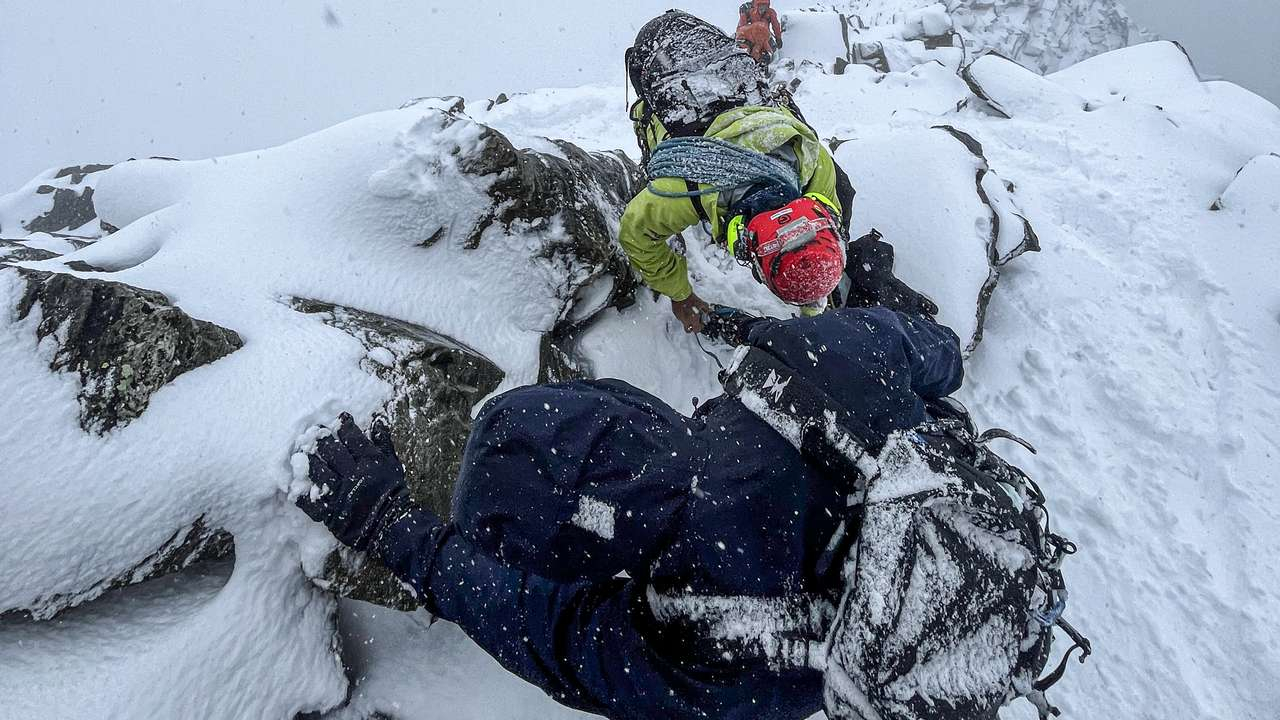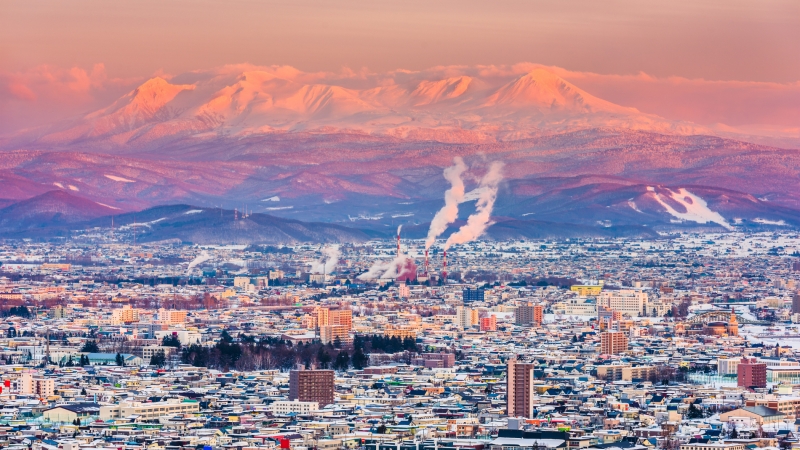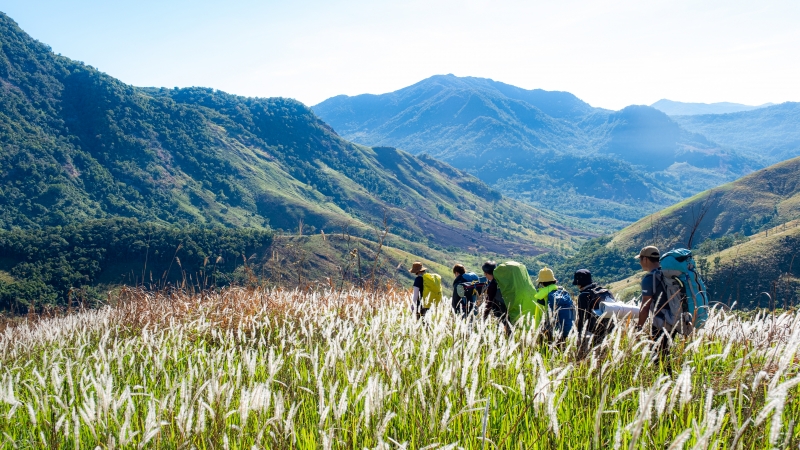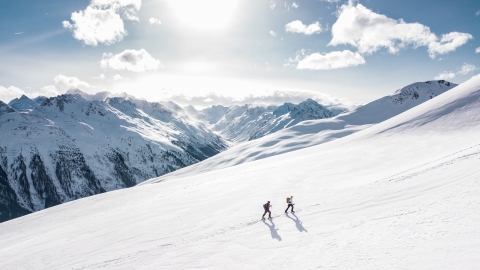On September 23-24, 2024 (local time), an emergency rescue on the Matterhorn peak, Switzerland, successfully saved two Vietnamese climbers who were in trouble at an altitude of over 3,500m. The rugged terrain combined with harsh weather, including snowfall, strong winds and dense fog, created an extremely great challenge for the rescue team and climbers.
Early on the morning of September 23, the Air Zermatt rescue team (Swiss airline) received an emergency call about two climbers in trouble on the top of the Matterhorn. However, the weather at that time was too bad to allow rescue by helicopter or by road. Three rescue experts from the Zermatt rescue station had to wait until 1 pm to start climbing up, moving via the Zermatt Bergbahnen cable car system to Schwarzsee, then continuing on foot. When they reached an altitude of 3,500m, they found the two climbers in a state of exhaustion and severe hypothermia.
One of the reasons why the two Vietnamese climbers became so serious was that they were not properly equipped for high-altitude climbing conditions. According to the report, they were only wearing light sneakers and thin clothing, which were not enough to cope with the extreme cold and dangerous terrain of the Matterhorn. In fact, climbing the Matterhorn without such appropriate equipment is very dangerous, as the weather can change quickly and the terrain conditions are very unpredictable.
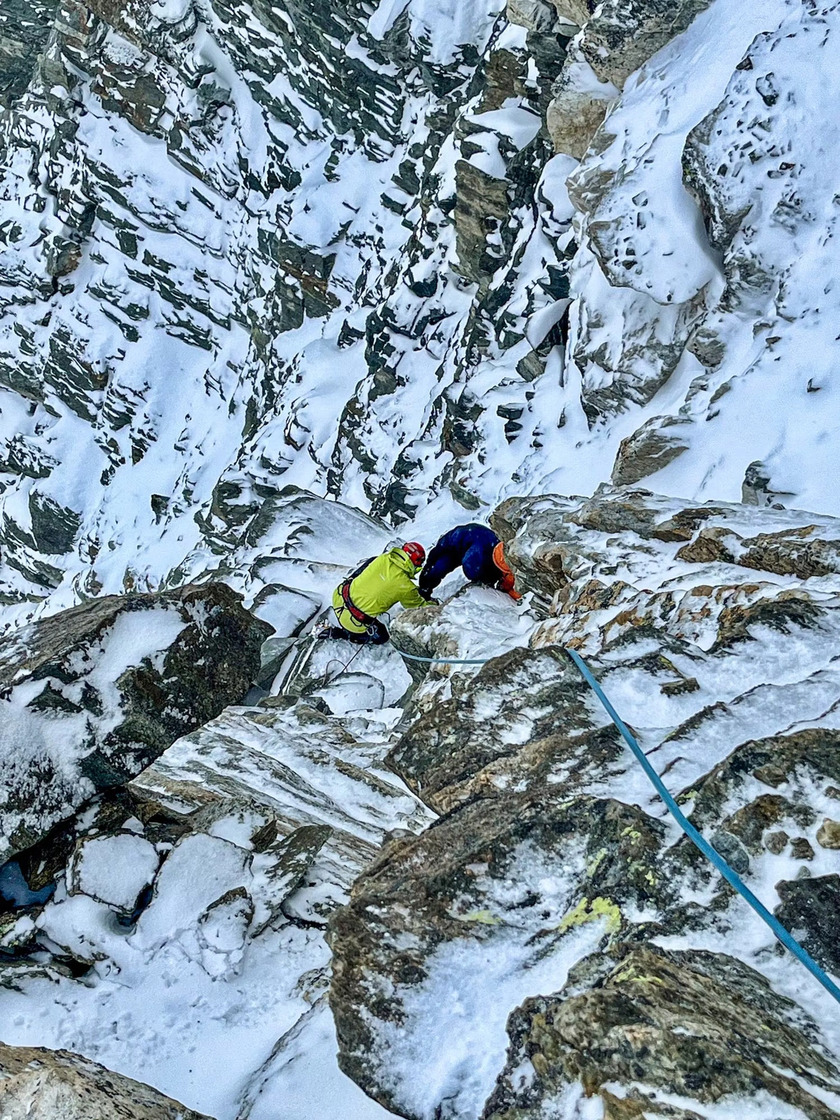
The rescue was difficult due to the terrain and harsh weather.
Unable to reach the scene by helicopter, the rescue team had to rappel down to the two trapped climbers and use a rope system to pull them back to the main climbing route. The team then struggled through thick snow and ice to reach the temporary shelter at Hörnli Hut, where the rescue team and the climbers found a safe haven while they waited for the Air Zermatt helicopter to arrive when the weather cleared.
At around 2am on 24 September, with the weather showing signs of improvement, Air Zermatt helicopters successfully made two flights to the Hörnli Hut to bring the two climbers and the rescue team to safety. The rescue lasted 14 hours, from the time the call was received until everyone was safely brought back. After being medically examined by an Air Zermatt doctor, both climbers were fortunately not seriously injured and were able to return home.

Air Jermatt helicopter successfully transported the victims and rescue team to safety.
With its rugged terrain and harsh weather conditions, the Matterhorn presents a formidable challenge even for experienced climbers. This underscores the need to carefully check weather conditions, be appropriately equipped, and not underestimate the dangers of the high-altitude environment. Lack of the necessary equipment and skills can lead to life-threatening situations. Fortunately, the two climbers were rescued by the bravery and skill of the rescue team, but without the timely intervention, the situation could have been much more dire.
The Matterhorn rescue is a testament to the strength of the human spirit in the face of adversity, and the ability of rescue teams to cope with dangerous situations. In the future, lessons learned from accidents like this will help improve safety for the climbing community and save more lives.





